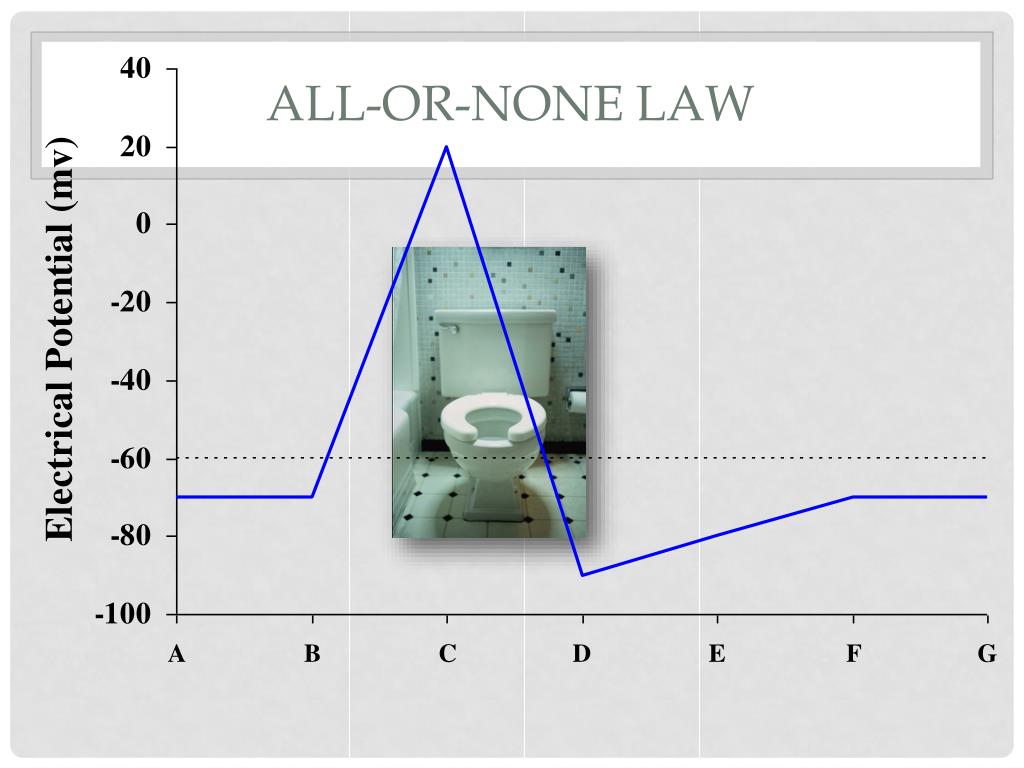

Neurons, however, can provide information about the strength of a stimulus by altering the rate at which they generate action potentials. Action potentials operate on the all-or-none principle and involve the movement of Na+ and K+ across the neuronal membrane. A weaker stimulus will not produce a weaker neural impulse. Complete answer: All or none law is not applicable for Whole skeletal muscle. Neurons follow an all-or-none principle, meaning that either the neuron fires an action potential or it does not fire one. Hint: All or none law is not applicable for the muscle which is a form of striated muscle tissue that is under the voluntary control of the somatic nervous system. At the synapse, the action potential triggers the release of the neurotransmitter substance to affect postsynaptic cells. The action potential originates near the soma and once it starts, it travels down the entire length of the axon until it reaches the terminal buttons.

At the peak of the action potential, the inside of the axon becomes less negative (or even positive), and potassium ions are driven out of the cell while positively charged sodium ions rush in. An action potential results from brief changes in the membrane's permeability to sodium and potassium ions.

Stimulation of sufficient intensity alters the permeability of the cell membrane. The relationship between the level of stimulation and the production of a neural impulse is called the all or none principle. Athabasca University Athabasca University Psychology Glossary of Termsīrief, localised, transient change in the neuron's voltage, providing the basis for the conduction of information along an axon.


 0 kommentar(er)
0 kommentar(er)
